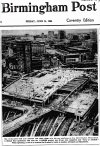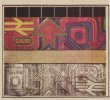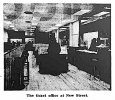There is clear concern for the diesel exhaust fumes that are the byproducts of chiefly the Cross Country units and Transport for Wales, but are also from the Virgin Voyagers that pass through. It is an increasing threat to health in confines of a station where the open areas have been reduced through the making of Grand Central. Whilst there is an obligation to switch off the engines of standing for long periods, the trains passing through continue to pollute. The health consequences for station platform staff must be a concern to Network Rail. The number of services that use the station have increased since privatisation, but units are often smaller in size, as the franchise hires all of its stock and this a cost that has to be balanced against profitability. Platforms could have two or even three units in at time, and if diesel powered contributing the noxious gases and particles to the immediate area for all to inhale.










